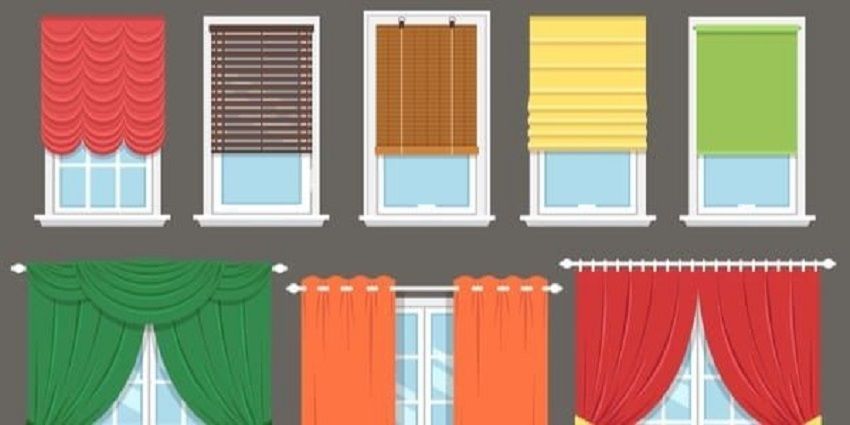
Types of window coverings
Window coverings are used to block or obscure visibility, moderate the amount of light, heat, and cold that enters a space, or allow people in one area to control the ambiance of another. There are many types of commercial window coverings, including blinds, shutters, curtains, drapes, shades, and roller shades.
There are three main types of window coverings:
Blinds
These are typically made from lightweight materials like metal or plastic. They usually have slats attached to extend across the window horizontally, which can be controlled by an attached cord to be pulled up or down at any time. You can install blinds inside the window frame with little projections on either side, which slide onto a building’s outer window trim.
Pros:
v They can easily be installed with minimal tools or expertise
It comes in different materials and kinds (wood, metal, plastic).
v Can absorb light well
v Easy to clean
Cons:
v Not great for blocking heat
v Lightweight construction may require frequent repair and maintenance depending on how often it’s used – Require more space between the window and sill than shades do
Shades
Like blinds, shades are also made from lightweight materials and can be opened and closed at will. The difference between shades and blinds is that shades are typically attached to a roller on top of the fabric rather than having slats. In the past, they were mostly used inside homes, but today many people use them outside their windows as exterior shutters, which look very similar but have more solid construction with a frame around them.
Pros:
v Attractive design that can help control how much light enters your home
v Rollers used for shades will last longer than slats used in blinds
v Can absorb light well if they’re lined with insulation
v Easy to install because they slide onto a metal track similar to how drapes are hung
v Reversible- that means you can choose which side faces out when hanging them in different areas of your home
Cons:
v Not as versatile as blinds because they can generally only be opened and closed
v Block less heat than blinds do
v Require a lot of space between the window and sill if they’re to be used as exterior shutters
Draperies
These window coverings tend to be the heaviest of the three types of window coverings because they typically consist of multiple layers, including a bottom lining, an insulating layer, and an attractive upper fabric or valence section. Each layer and the valence can be controlled through a series of tie-backs that can open or close different areas to control visibility or heat. Draperies are usually hung from curtain rods that attach to the top of the window frame inside the home.
Pros:
v Provide good insulation for your home during cold weather months
v Look very attractive when they’re open
v Come in a variety of colors and styles to match most décor schemes
v Can be easily hung on curtain rods that fit inside your window frame
Cons:
v Heavy, thick fabric makes it harder to see outside the window
v Block less heat than blinds or shades do
v Require more space between the window sill and outer frame if they are used as exterior shutters (similar to shades)
All three types of window coverings have their unique benefits and drawbacks that you should consider before making a final decision on which type will work best for your home. By understanding each type’s key features, you can easily narrow down which solution would be best suited for the particular window in question.







